The Auspiciousness Of Anthocyanin
This article explores the many health benefits of foods that contain anthocyanins, offering recipe ideas and info on the functions and benefits this compound provides for your garden crops

When Mother Earth paints plants, fruit, flowers and veggies in luscious blues, lavish purples and rich reds she is dipping her paint brush in Anthocyanin.
It is the compound that makes your blueberries blue, your elderberries purple, your strawberries red and your blackberries ‘black’.
Anthocyanins are a type of flavonoid, a class of compounds with antioxidant effects. Found naturally in a number of foods, anthocyanins are the pigments that give red, purple, and blue plants their rich coloring. In addition to acting as antioxidants and fighting free radicals, anthocyanins offer anti-inflammatory, anti-viral, and anti-cancer benefits. To date, more than 635 different anthocyanins have been identified.
I make a point of growing a wide range of crops rich in Anthocyanins because not only do they benefit your health when you eat them, but they also provide very practical benefits for the plants that produce them as well.

In plants, anthocyanins play a role not only in reproduction, by attracting pollinators and seed dispersers, but also in protection against various abiotic and biotic stresses.
Abiotic stress is defined as the negative impact of non-living factors on living organisms in a specific environment (such as drought, high soil salinity, heat, cold, oxidative stress and heavy metal toxicity) which in the context of farming/gardening, limit crop productivity.

Biotic stresses are defined as an adverse condition in which plant cannot sustain its normal growth due to the interaction with deleterious microorganisms (such as pathogenic fungi, bacteria, viruses, viroids, phytoplasma, and nematodes).
In essence, plants produce phytochemicals like anthocyanin as a protective mechanism; phytochemicals help build plants’ resistance and protect them from being destroyed.

That being said, whether it is with the human diet or the color of crops one grows, diversity is key to resilience. Thus while I do grow quite a few Anthocyanin rich crops we also make a point of growing crops that express the rest of the color spectrum of antioxidants and other types of phytochemicals (orange, yellow, green etc).

What are the health benefits of anthocyanins? Some of the conditions that research suggests anthocyanins help prevent include:
-Cardiovascular disease and risk factors, such as high blood pressure and hardening of the arteries
-Cancer
-Impaired immune function
-Diabetes
-Neurological disorders, such as Alzheimer’s disease and dementia
-Symptoms of poor cognitive function, including poor memory and trouble concentrating
-Fatigue
-Poor recovery from exercise/physical activity
-Vision loss
-Obesity

Here is a list that explores of some of the impressive human health benefits Anthocyanins have to offer:
1. Prevents Heart Disease
Anthocyanins enhance heart health, according to a 2010 report published in Nutrition Reviews. The report's authors note that anthocyanins improve cholesterol levels and blood sugar metabolism, as well as fight oxidative stress (a process known to play a role in heart disease).
Many studies have found that having just one to two (or ideally more) servings of anythocyanin-rich foods per day can protect you from problems from high blood pressure and arteriosclerosis. While it’s great to have antioxidant-rich foods every day, even having them several times per week can improve your health. One finding from the Iowa Women’s Health Study, which included more than 34,000 postmenopausal women, found that women who consumed anthocyanin-rich strawberries and blueberries once per week or more experienced significant reductions in risk of death from heart disease/coronary artery disease.
Another large body of research from the Nurses’ Health Study I and II, which followed over 46,000 women from and 23,000 men for more than a decade, found evidence that the those with the highest intakes of anthocyanin (especially from blueberries and strawberries) had a significantly decreased risk for developing hypertension, myocardial infarction and/or having a heart attack compared to those with the lowest intake. This was true even after controlling for other factors like exercise level, family history and BMI.
Anthocyanin benefits for diabetes and pancreatic disorders have also been unearthed in recent years, and again the efficacy is attributed to the multiple, simultaneous biological effects these pigments cause in the body, including prevention of generation of free radicals, decreased lipid peroxidation, reduced pancreatic swelling, and decreased blood sugar concentrations in urine and blood serum
2. Prevents Cancer
Anthocyanins aid in the prevention of breast cancer, according to a laboratory study published in Phytotherapy Research in 2010. In test-tube experiments, scientists showed that anthocyanins extracted from blueberries helped inhibit the growth of breast cancer cells.
Research suggests that anthocyanin can decrease the risk of developing various types of cancer due to its antioxidant, anticarcinogenic and anti-inflammatory effects. This has been demonstrated in both in vitro and in vivo research trials in humans and animals. Studies show that anthocyanins have the ability to naturally fight cancer by blocking cell proliferation and inhibiting tumor formation by interfering with the process of carcinogenesis. One way anthocyanins inhibit tumorigenesis by blocking activation of mitogen-activated protein kinase pathways.
3. Fights Obesity
Research suggests that anthocyanins protect against obesity. In a 2008 study from the Journal of Agricultural and Food Chemistry, scientists found that mice fed an anthocyanin-enriched high-fat diet for eight weeks gained less weight than mice fed a high-fat diet without anthocyanins.
Anthocyanins can improve the metabolic control involved in obesity by reducing lipogenesis, oxidative stress, and inflammation. This can boost the speed of lipolysis and thermogenesis, regulate satiety, and reduce body fat accumulation.


4. Anti-inflammatory
Fruits, such as berries (and some vegetables) contain polyphenol compounds that offer anti-inflammatory activity in humans. Among the most notable polyphenols in berries are anthocyanins, responsible for their distinctive colors of red, blue, and purple. Berries have been studied widely for their antioxidant properties. Preclinical data suggest important effects on inflammatory pathways. Correspondingly, the effects of berries, including extracts and purified anthocyanins, have been the subject of a number of human trials. These studies discovered that the polyphenols in the anthocyanins group are especially effective at decreasing and modulating the inflammation response in a number of different areas in the human body.
5. Supports Optimal Gut Health
Research suggests that anthocyanins have positive effects on gut health when they interact with microflora, which can help decrease inflammatory markers associated with many chronic diseases, plus they can support hormonal balance.
In several studies, Anthocyanin supplementation demonstrated positive effects on intestinal health. The main results identified were an increase of Bacteroidetes and a decrease of Firmicutes, an increase of short chain fatty acids production, a decrease of intestinal pH and intestinal permeability, an increase of the number of goblet cells and tight junction proteins and villi improvement in length or height.
6. Boosts Immune System
Anthocyanin bioflavonoids provide protection from DNA damage and lipid peroxidation, plus they have anti-inflammatory effects and help optimize production of cytokines that regulate the immune responses. They have also been shown to support hormonal balance by reducing estrogenic activity, help regulate enzyme production that aids nutrient absorption, and strengthen cell membranes by making them less permeable and fragile.

7. Improves Brain Function
Research suggests that flavonoids, including anthocyanins, have the ability to enhance memory and help prevent age-related declines in mental functioning. Extensive research in animals has shown that the flavonoids found in fruit and fruit juices can improve memory and slow age-related loss of cognitive functioning.
Several other studies have found that berries, most notably blueberries, which are rich in anthocyanins, can effectively reverse age-related deficits in certain aspects of working memory. Anthocyanins and other flavonoids work by inhibiting neuroinflammation, activating synaptic signaling, and improving blood flow to the brain. Some dietary anthocyanins can cross the blood-brain barrier, allowing the compounds to have a direct beneficial effect.
The authors of a recent review on the subject suggested that the consumption of flavonoid-rich fruits such as berries, apples, and citrus throughout life potentially could limit or even reverse age-dependent deteriorations in memory and cognition.
Another study out of Korea found that administration of isolated anthocyanins from purple sweet potato enhanced cognitive performance and inhibited lipid peroxidation in brain tissues in mice.

8. Enhanced Exercise Performance and Recovery
Antioxidants improve physical performance by lowering exhaustion and the negative effects of excessive oxygen and radical accumulation during physical activities. In one double-blinded clinical trial that involved 54 female and male athletes, when one group was given 100 milligrams of anthocyanin pills per day for six weeks, the participants in that group were found to experience a significant improvement in their VO2 max (maximal oxygen consumption) compared to the second group that received 100 milligrams of placebo pills daily.
Some studies have also found that fruit juices that contain anthocyanin, such as 100 percent tart cherry and blueberry juices, have antioxidant and anti-inflammatory effects that wind up positively influencing muscle damage following exercise and the ability to properly recover.
Here is another link to research on how eating Blackcurrants enhances performance and recovery.
9. Enhanced Vision and Eye Health
Anthocyanin has been shown to help enhance night vision and overall vision by protecting the eyes from free radical damage. One study found that oral intake of anthocyanosides from black currants resulted in significantly improved night vision in adults. Research suggests that enhancement of rhodopsin regeneration and protection against inflammation are at least two mechanism by which anthocyanins improve sight and protect the eyes.
Using Anthocyanins for Health:
Getting your fill of anthocyanin-rich fruits and vegetables help boost your overall health by offering up an array of nutrients.
What veggies and fruits contain anthocyanins? Some of the top anthocyanin foods include:
Berries, especially black currants, elderberries, black goji berries, cranberries, tart cherry juice, blueberries, black raspberries, blackberries and strawberries. The freshly squeezed juices of these fruits are also a source. Certain “superfood” berries also contain anthocyanin, including elderberry, hawthorn berry, loganberry and açai berry.

Optimizes Mitochondrial Health and increases the production of adult stem cells:
Mitochondria are the powerhouses of your cells, generating energy to fuel your cells’ biochemical reactions. Via optimizing their function and promoting their rates of regeneration within your body you are building a solid foundation for health, vibrancy and longevity from the cellular level up.
Sufficient mitochondrial biogenesis (the process by which cells increase mitochondrial numbers) is necessary for efficient cell function and haemostasis, which is dependent on the regulation of ATP generation and maintenance of mitochondrial DNA (mtDNA). These procedures play a primary role in the processes of inflammation, aging, cancer, metabolic diseases, and neurodegeneration. Polyphenols (such as anthocyanins) are considered as the main components of plants, fruits, and natural extracts with proven therapeutic effects during the time. These components regulate the intracellular pathways of mitochondrial biogenesis.
In vitro studies showed that anthocyanins elevate the expression of mitochondrial TFAM, PGC-1α, and NRF-2. These increased levels affect the phosphorylation of AMPK and increase rates of mitochondrial biogenesis.
The studies available also support the ability of anthocyanins to prevent damage to mitochondria and to sustain its function. Berry extracts also demonstrated positive outcomes in different models of neurodegeneration, endothelial dysfunction, myocardial damage, metabolic disorders, longevity, and cancer. At the molecular level, major anthocyanins can modulate the expression and activity of mitochondrial proteins, apoptotic and biogenesis factors, antioxidant defenses, inflammation, and the AMPK pathway. Noteworthy, anthocyanins could balance abnormalities in ROS production, respiration, and mitochondrial fragmentation in cells exposed to toxicants or oxidizing agents.
Helps mitigate the detrimental effects of heavy metal poisoning and assists with chelation:
When heavy metals enter the body (whether through pesticides, personal hygene products, kitchenware, vaccines, more vaccines, experimental gene therapy injections that are loaded with graphene and/or stratospheric aerosol injection programs , they are introduced into body cells, where they start to disrupt the normal function of proteins and DNA. As a result, the damage is not restricted to particular organs but is multi-systemic.
In the central nervous system, heavy metals can cause mental disorders and degenerative neurological disorders. In addition, damage to blood vessels may lead to hepatic, renal, and cardiac damage. Long-term exposure to heavy metals can cause mutations in cells’ DNA, leading to cancer.
Our bodies can’t effectively excrete heavy metals in their elemental forms. The use of chelating agents makes the elimination process more efficient.
Chelation therapy is more efficient when it’s combined with antioxidants (such as anthocyanins).
Through incorporating antioxidant-rich foods into your diet, you can reduce the damage that heavy metals cause in the body and help to eliminate heavy metals as well.
It is also worth noting that long before scientific studies (many of which I linked above) were conducted to isolate and investigate anthocynanin, foods containing this antioxidant were used in folk medicines around the world to improve health and fight disease. Traditional cultures have known about the healing effects of anthocyanin foods for centuries. For example, historically, red, blue, black and purple foods have been viewed as remedies for conditions like liver disfunction, hypertension, vision disorders, microbial infections, fatigue, anxiety and diarrhea.
Anthocyanin in the garden and in the forest:
I always felt instinctively drawn to source out heirloom seeds to grow purple and blue crops as these colors appeal to my eyes very much, but once I understood the biological functions of the compound responsible for that color being present in plants my strategy for sourcing out (and breeding) crops with this attribute was brought into a new degree of focus.
There is accumulating evidence that anthocyanins have health-promoting properties (not only for humans after being ingested but also health promoting properties within living plants) which makes anthocyanin metabolism an important target for heirloom veggie, fruit and herb breeders.
Throughout several years selectively breeding for higher anthocyanin expression I have noticed increased resistance to powdery mildew and blight.
Anthocyanins, are also pigments responsible for spectacular displays of vermilion in the leaves of deciduous trees (autumn colors) as well as in some red-leafed plants and trees that have that color year round.

They occur in habitats as diverse as the Antarctic shoreline and the tropical rainforests, are as abundant in arid deserts as in freshwater lakes, and seem equally at home in the light-starved forest understorey as in the sun-drenched canopy. In many red-leafed species the manufacture of red pigments is transient, often associated with a discrete developmental stage such as in the growth flushes of tropical trees, or in the senescing autumn foliage of deciduous trees. In certain other species, however, red pigments can persist throughout the leaf's entire life span, or else they are induced and retained only after the plant has experienced stress. Functional implications of these red pigments in plants have been the focus of a significant research output over the past decade.
For most vascular plants, red colouration in leaves is achieved by anthocyanins, predominantly cyanidin-3-O-glucoside, as a solution located in the vacuole of the plant cell.

Some had long been considered the production of Anthocyanins to be an extravagant waste of a plant's resources. Contemporary research, in contrast, has begun to show that the pigments can significantly influence the way a leaf responds to environmental stress. Anthocyanins have been implicated in tolerance to stressors as diverse as drought, UV-B, and heavy metals, as well as resistance to herbivores and pathogens. By absorbing high-energy quanta, anthocyanic cell vacuoles both protect chloroplasts from the photoinhibitory and photooxidative effects of strong light, and prevent the catabolism of photolabile defence compounds. Anthocyanins also mitigate photooxidative injury in leaves by efficiently scavenging free radicals and reactive oxygen species. Far from being a useless by-product of the flavonoid pathway, these red pigments may in some instances be critical for plant survival.


Anthocyanins, for example, are associated with enhanced resistance to the effects of chilling and freezing, to heavy metal contamination, to desiccation, and to wounding.


The red colours of anthocyanic leaves have also been proposed both to attract and to repel various animal species. Burns and Dalen postulated that red-orange autumn foliage of Canadian shrub species would accentuate the conspicuousness of black-coloured fruits to birds. Experimental manipulations of fruit and background foliage colours confirmed that the black-red contrast was indeed an effective enhancer of fruit-removal rates by avian dispersers. This means that some plants utilize anthocyanic foliage as a means to increase their rates of reproduction and the efficiency of seed dispersal.
Certain insects, on the other hand, seem to preferentially avoid eating red-pigmented leaves. California maple aphids, for example, readily colonise yellow-orange leaves of Japanese maples, yet they largely ignore red-leafed individuals. Similarly, leaf-cutting ants from the tropical forests of Panama browse significantly less on red leaves than on green leaves. To these and other insects the anthocyanins may serve as aposematic signals of defensive commitment against herbivory.
As noted above, anthocyanins also play an important role in plant stress tolerance, such as resistance to low temperature, drought, high light as well as nutrient starvation. Given we live in a time where we are dealing with climate instability, geoengineering and the destabilization of centralized infrastructures having plants that are drought tolerant and resilient to fluctuating growing conditions is becoming increasingly important.
Thus, I feel that there is immense untapped potential in strategizing for incorporating not only three dimensional stacking of functions (with plant guilds) in food forest and agro-forestry designs but also stacking functions offered through planning strategically for stacking functions offered by specific spectrums of colors (produced in the plant’s foliage and flowers) to optimize the resilience and efficiency of self-sustaining, decentralized perpetual food production systems. This could add a new dimension to food forest design that begins to account for how specific colors influence not only the resilience of plants, but also the bevavior of beneficial insects, birds, predators and so called “pest pressures” as well.

Anthocyanins are arguably the most versatile of all pigments, their multifarious roles in plant stress responses stemming as much from the physicochemical property of light absorption as from their unique combination of biochemical reactivities.
Thus, when I save seeds from plants in our garden, I closely observe which plants are expressing higher concentrations of anthocyanin and strategically save seeds from those plants (as to encourage this genetic attribute to become dominant and stabilized in future generations). This has helped me to co-create some extremely resilient varieties of kale, tomatoes, peppers and cannabis (that are more resilient than their non-purple cousins).
This results in not only very pretty looking plants, but also very tough plants that produce crops that offer a great many health benefits. Therefore, breeding (or sourcing out seeds for) heirloom crops that have high levels of anthocyanin stacks a lot of functions (as they say in permaculture design).

Anthocyanin in the kitchen:
I love creating recipes with anthocyanin rich berries, fruits, veggies, seeds and herbs. The opportunities for creating poetry for the eyes is huge and when one also takes the health benefits into account it becomes clear that adding these foods to your diet is a win win. I will first list some foods that contain anthocyanins below and then share some pics of recipe we like to enjoy that use ingredients rich in anthocyanins to help inspire your own colorful creations.


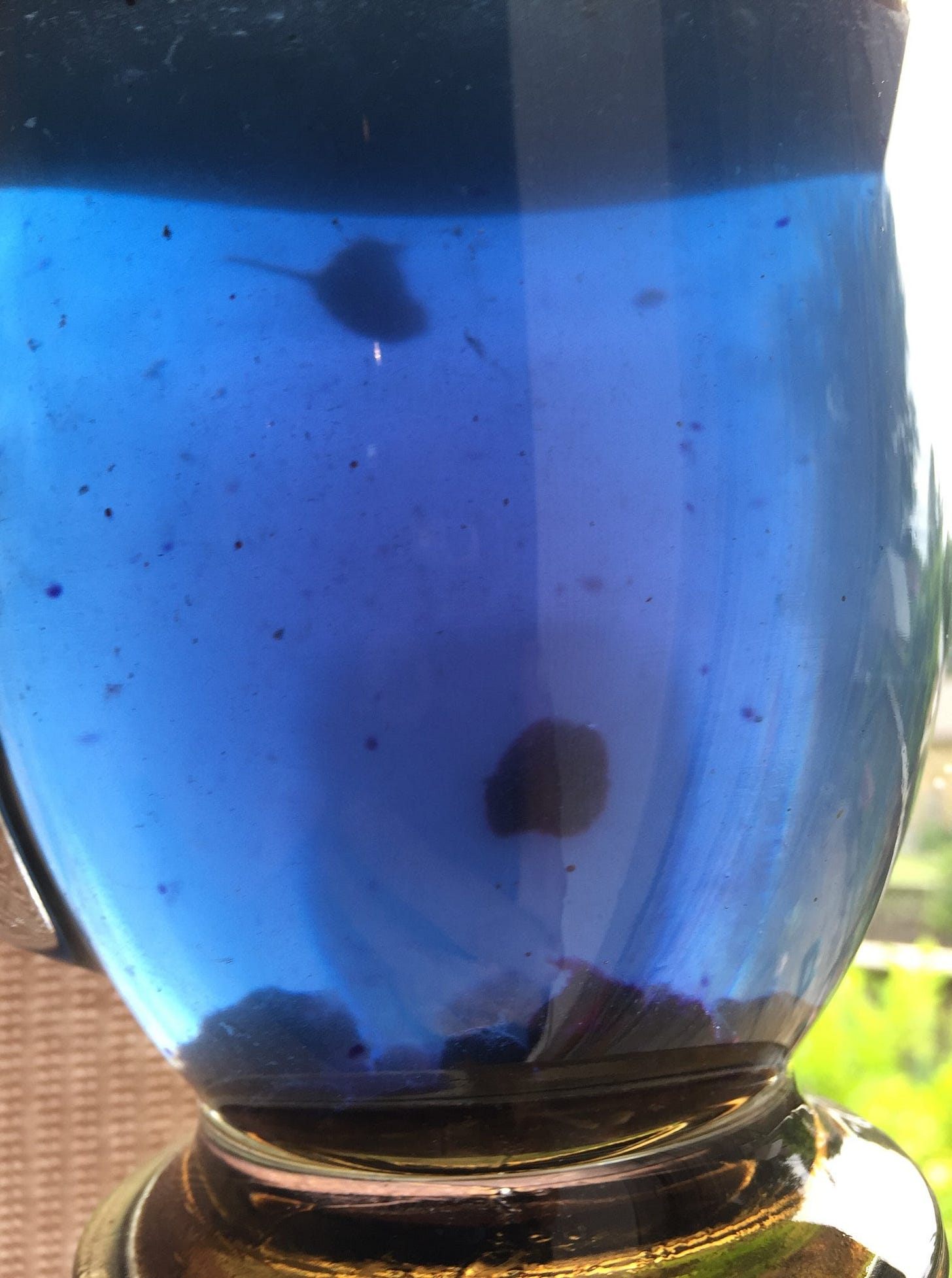


Some excellent dietary sources of anthocyanin include:
Fruits, vegetables and grains with red, purple, blue or black hues tend to be rich in anthocyanins. Berries have the highest levels, particularly black elderberries, black goji berries and aronia berries (chokeberries). Blueberries, blackberries, raspberries and strawberries are also great sources. Additional foods with a high anthocyanin punch include:

Fruits: Black plums, blood oranges, cherries, black and red grapes and pomegranates.
Vegetables: Red cabbage, red onions, red radishes, purple cauliflower, purple corn and the skin of purple eggplant.

Legumes and rice: Black beans, black rice and black soybeans.

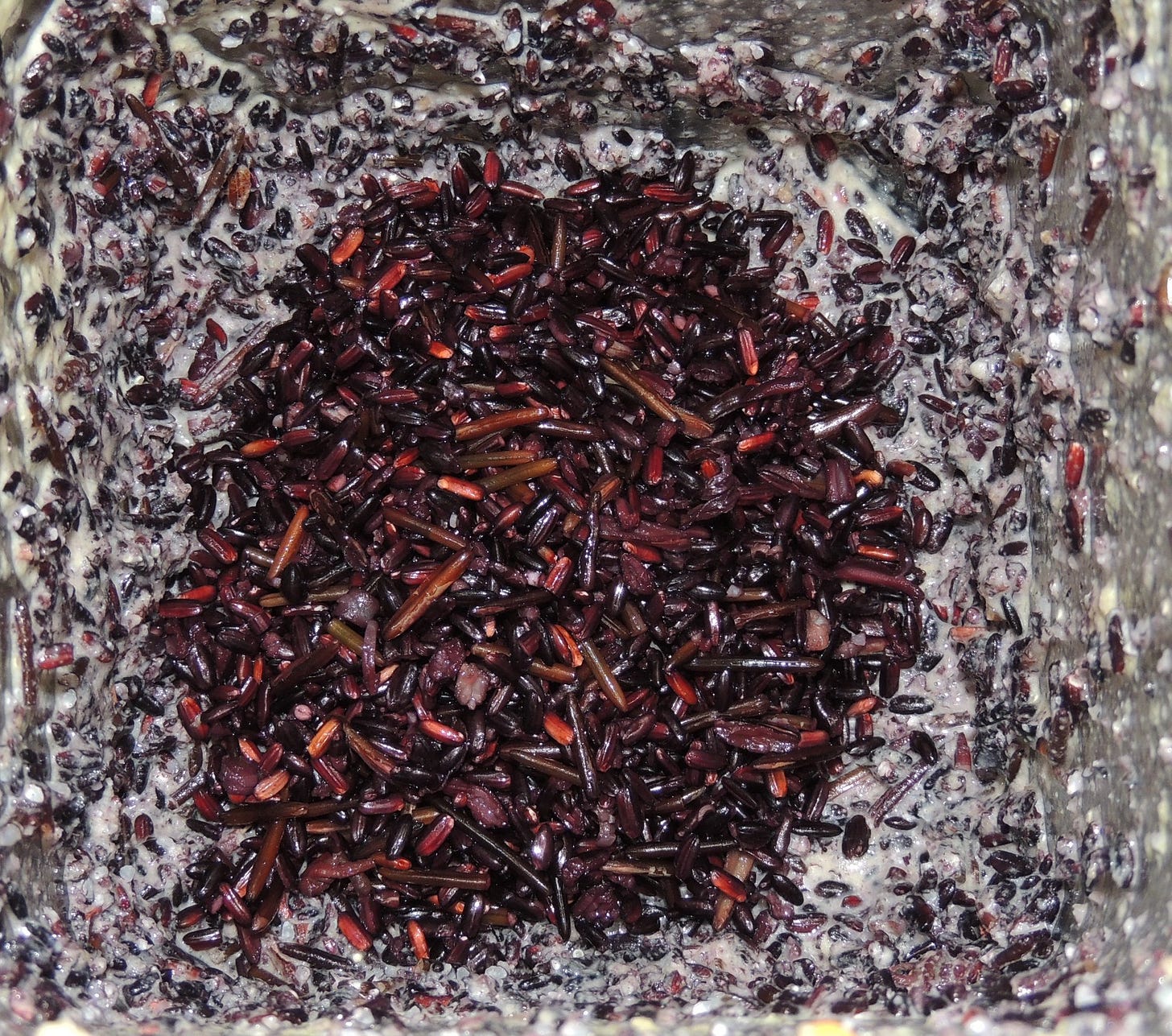

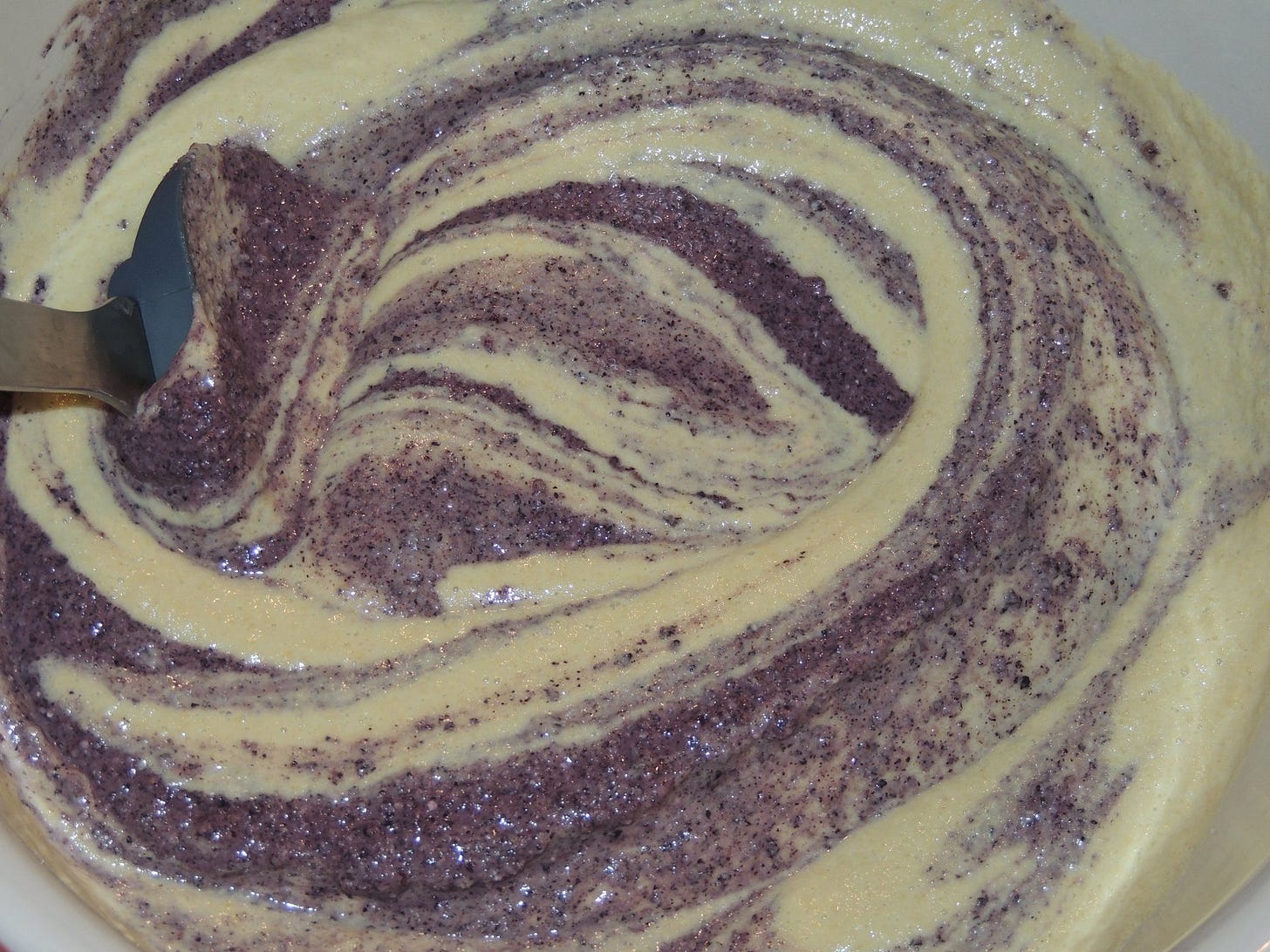


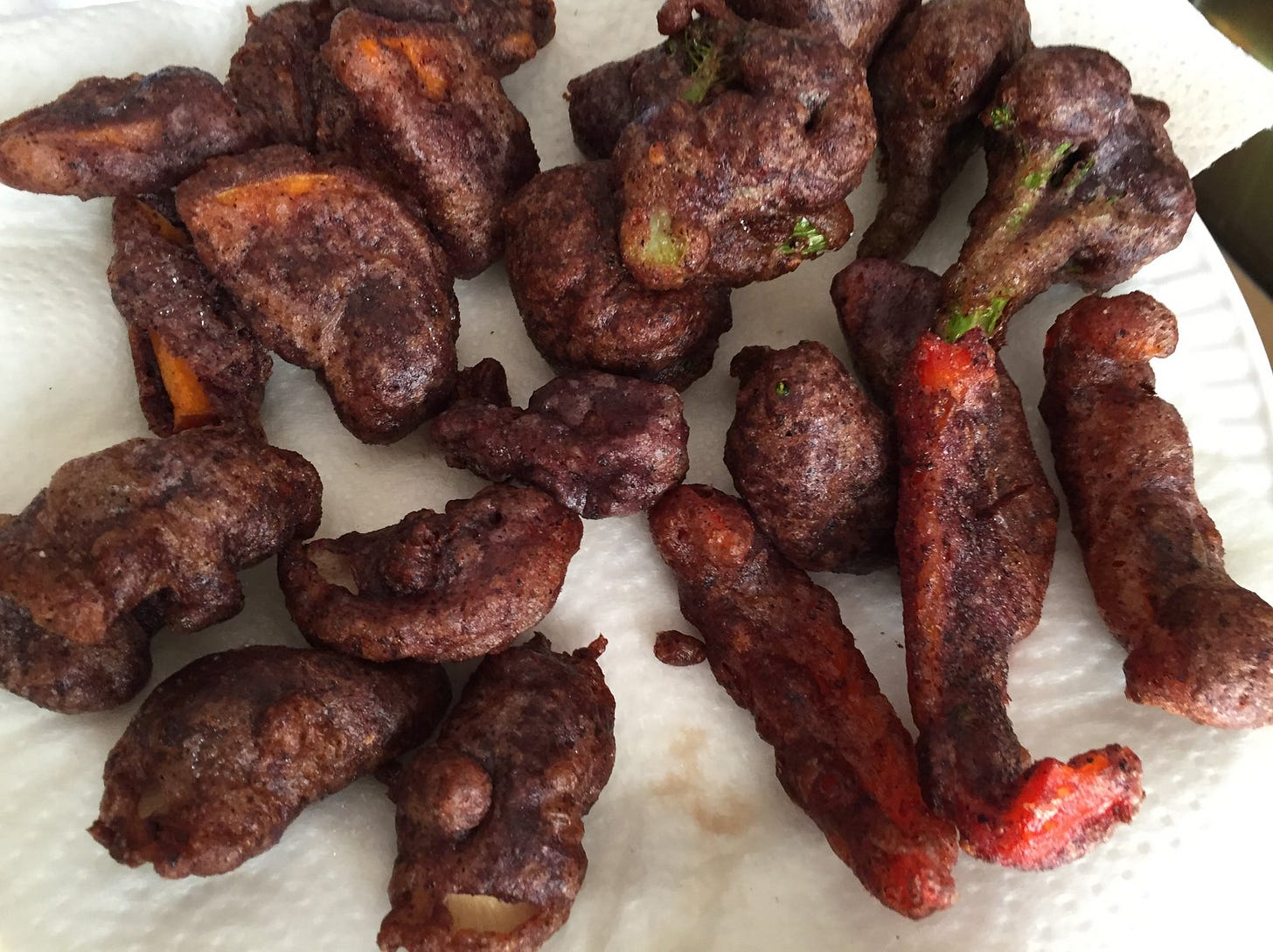


Legumes and rice: Black beans, black rice and black soybeans.

Beverages: Grape juice, purple carrot juice and wine

(the video above shows one of our batches of homemade Elderberry (Sambucus nigra) and Black Goji Berry (Lycium ruthenicum) mead on its third day of fermentation)
Other foods and medicine plants with high levels of anthocyanin include:
-Purple/black tomatoes

-Purple leafed Tulsi (aka Krishna Tulsi)
-Echinacea purpurea (Purple Cone Flower)
-Purple Sweet Potatoes
-”Ramps” aka wild leeks (Allium tricoccum)


- Purple and Red leafed Hosta shoots




-Red and Purple leafed Amaranth
-Red Dulse Seaweed (Red arils of Pithecellobium dulce fruit)
-Purple Fleshed Radishes
-Certain types of apples, (especially wild types, and/or many crabapple varieties)


-Blood oranges
-Blue corn

-Cacao Beans (seeds of the theobroma cacao tree)

-Purple and black carrots
-Lichens (such as Flavoparmelia caperata)

-Edible flowers and herbs, including purple mint, red clover, purple ‘bee balm’ (bergamot plant), Borage, Chrysanthemums, purple --passion flower, purple sage, common violet, Persian Basil, Thai Basil and lavender

Now you can see how when you plan a garden (or a meal) that includes naturally occurring purples, blues and reds you are co-creating something that promises success and good fortune (both in the context of your garden’s health and in the context of the health and longevity of your body).
I hope you enjoyed this exploration of the many health benefits, gardening strategy potentials and biological functions of Anthocyanins.
If this post resonates with you and you would like to share this content, here is a link for easy sharing.
The material above was an excerpt from Recipes For Reciprocity.
I recently had to cut some of the material above from the final edit of my soon to be published book due to printing budget constraints (but I wanted to share the material here for free so that at the very least people who are interested can benefit from the research and info).
I will be including many recipes in my upcoming book that incorporate the beautiful color, potent nutritional benefits and delicious flavor of Anthocyanin rich foods.
May you dream of future meals, preserves and garden designs offering rich tones of purple and blue and may this information help you to cultivate resilience, longevity health sovereignty.






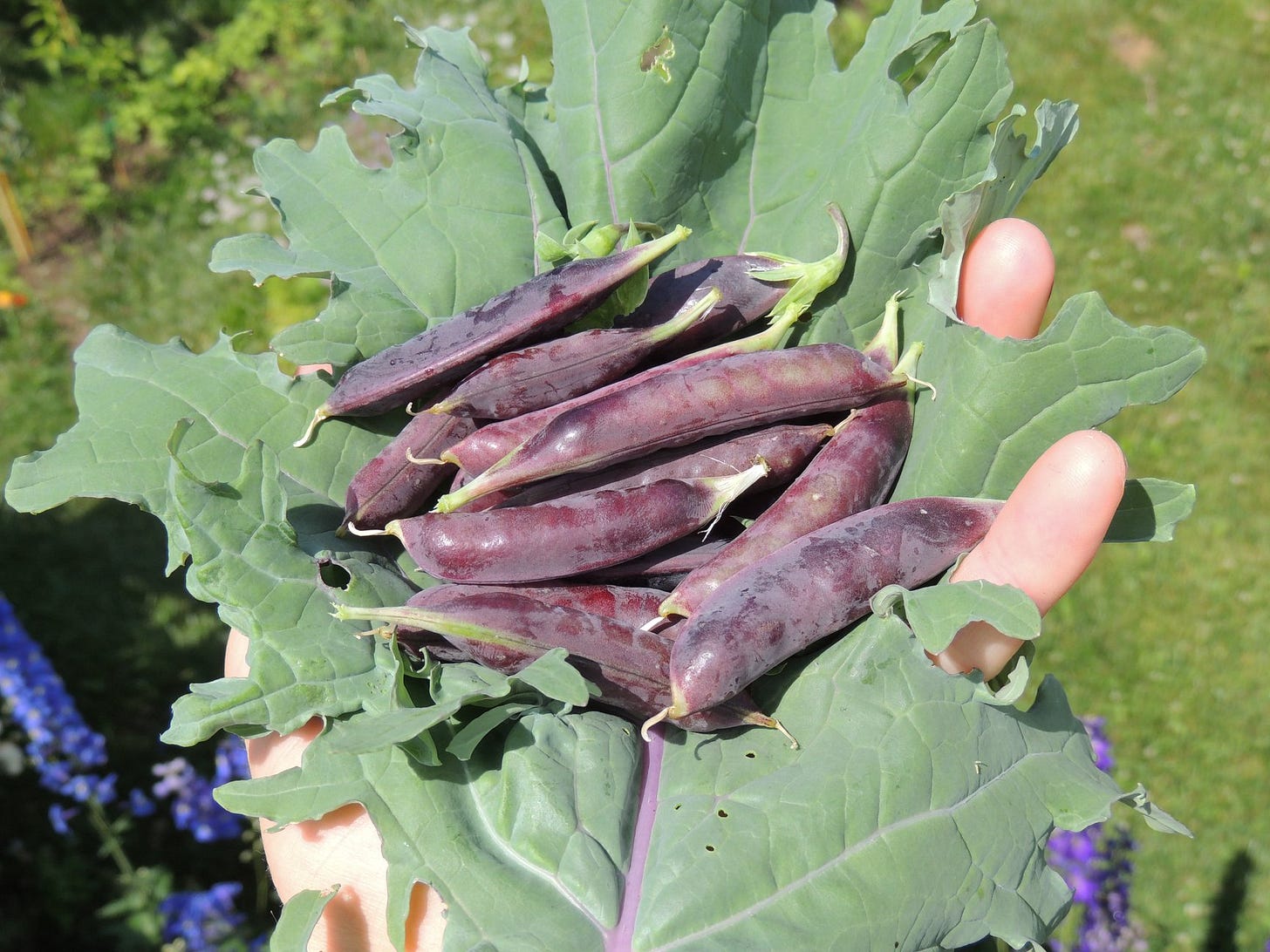
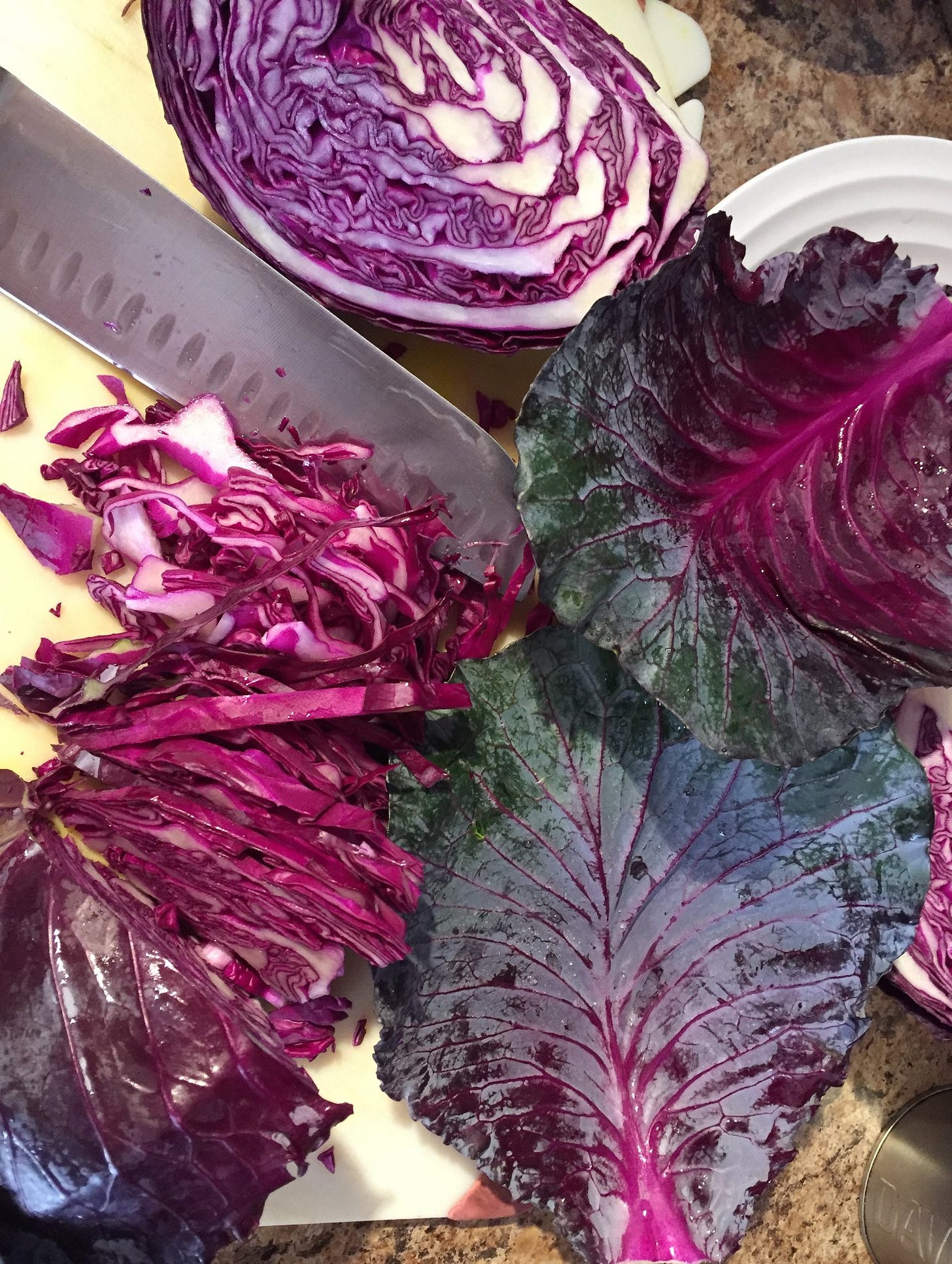
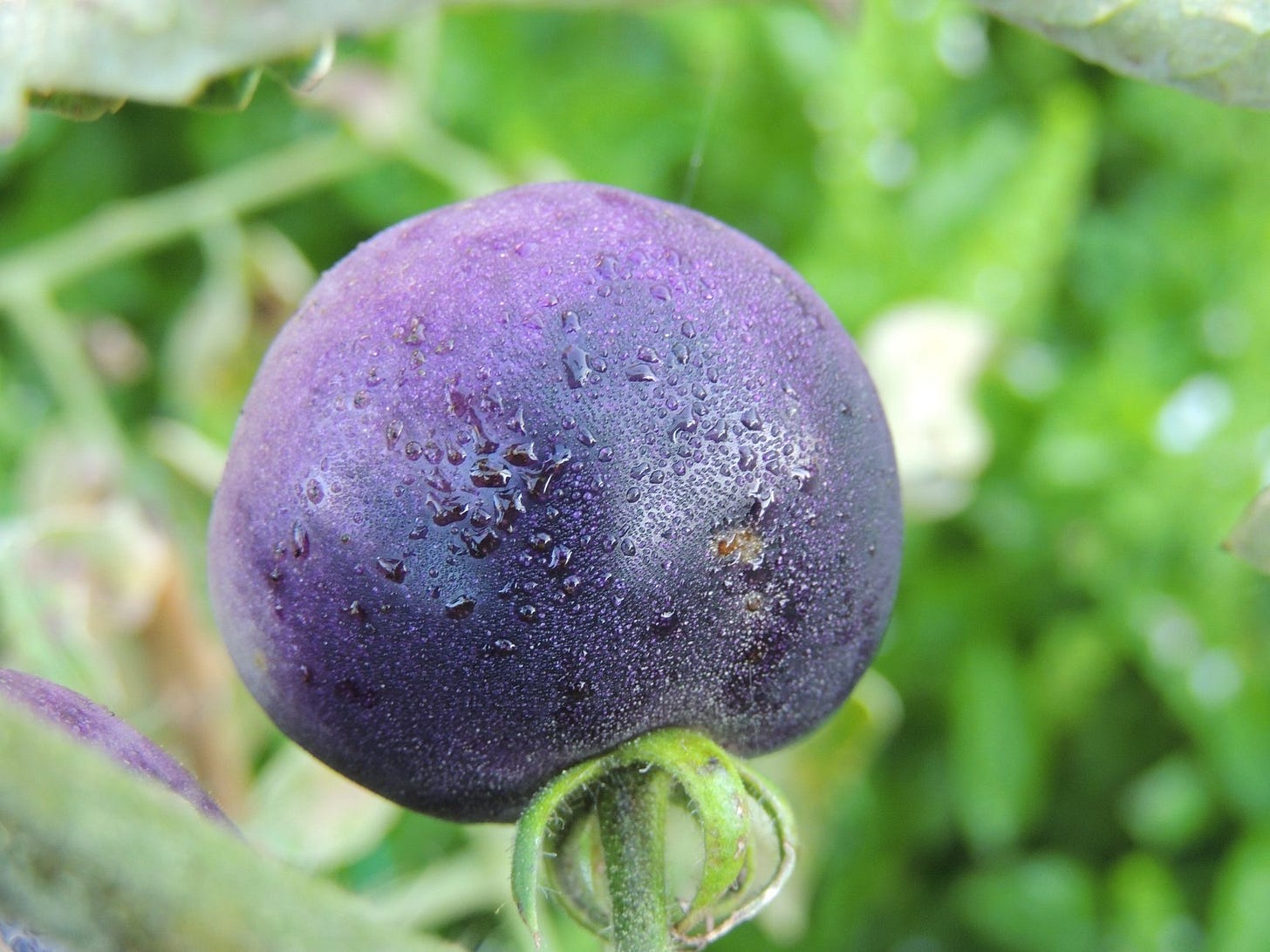











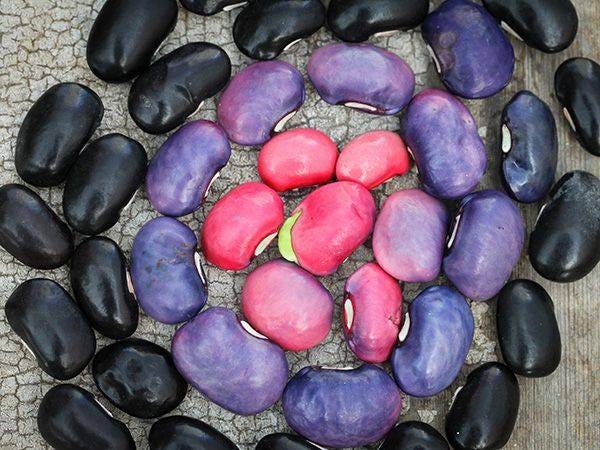





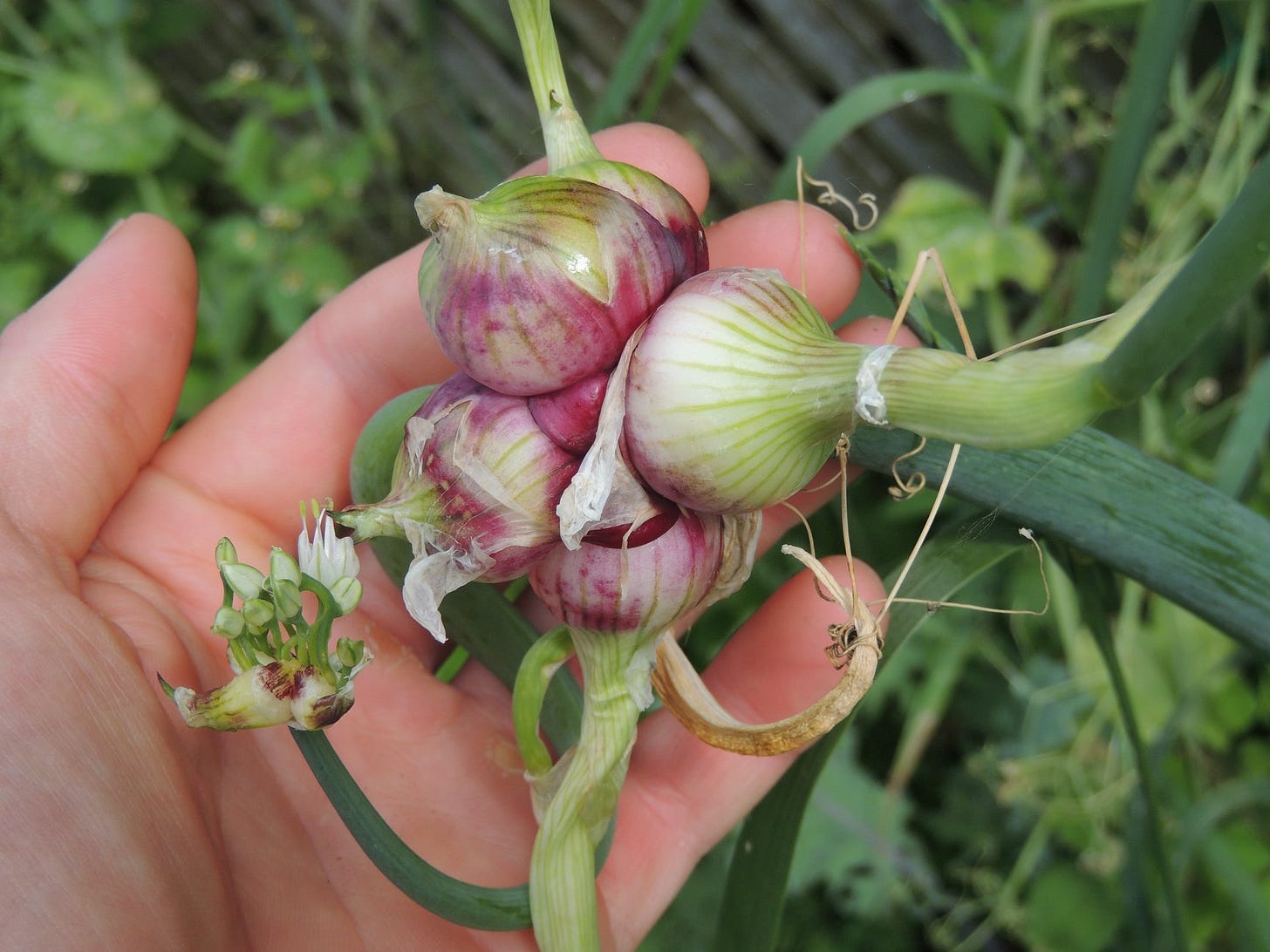
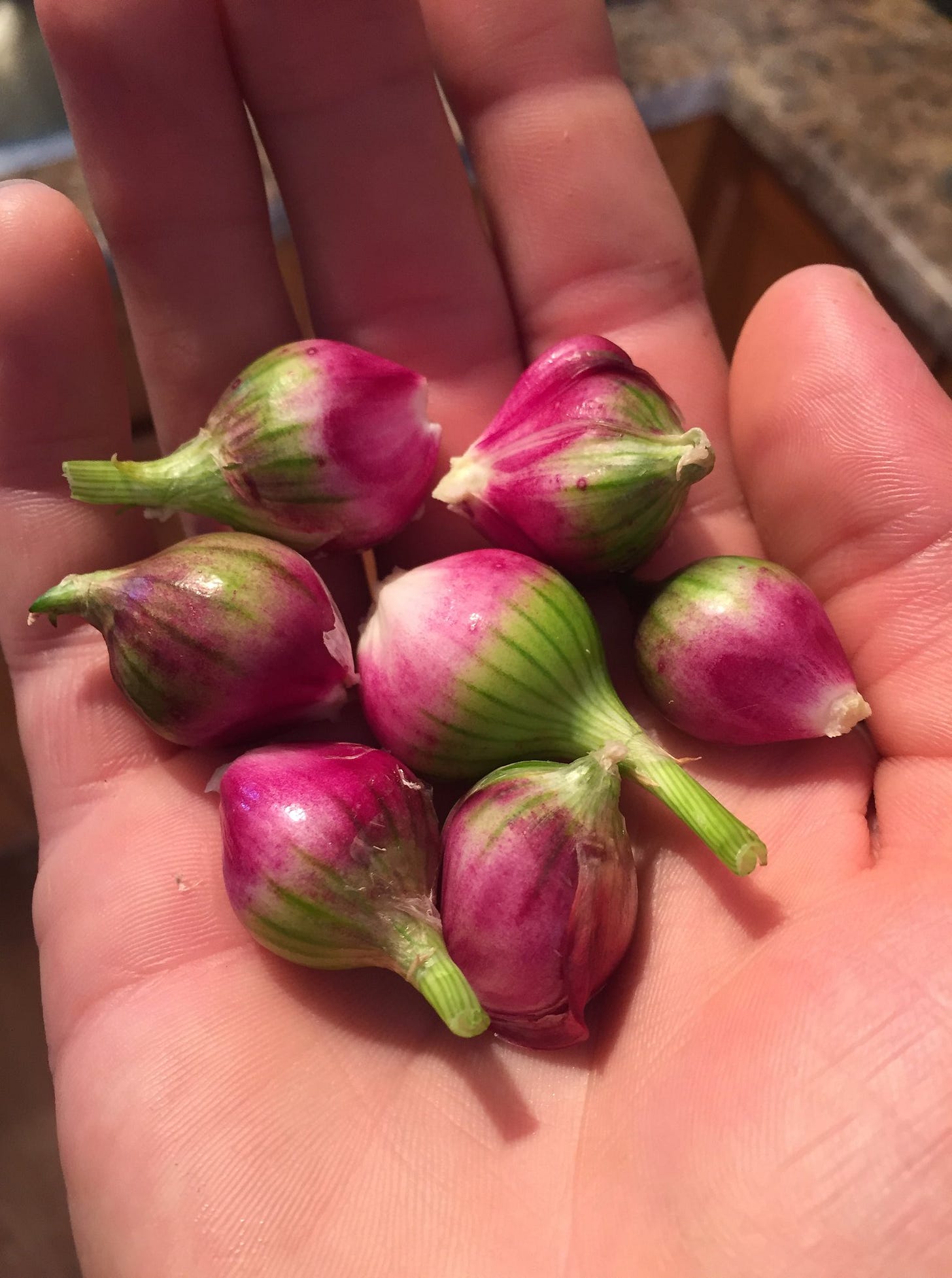



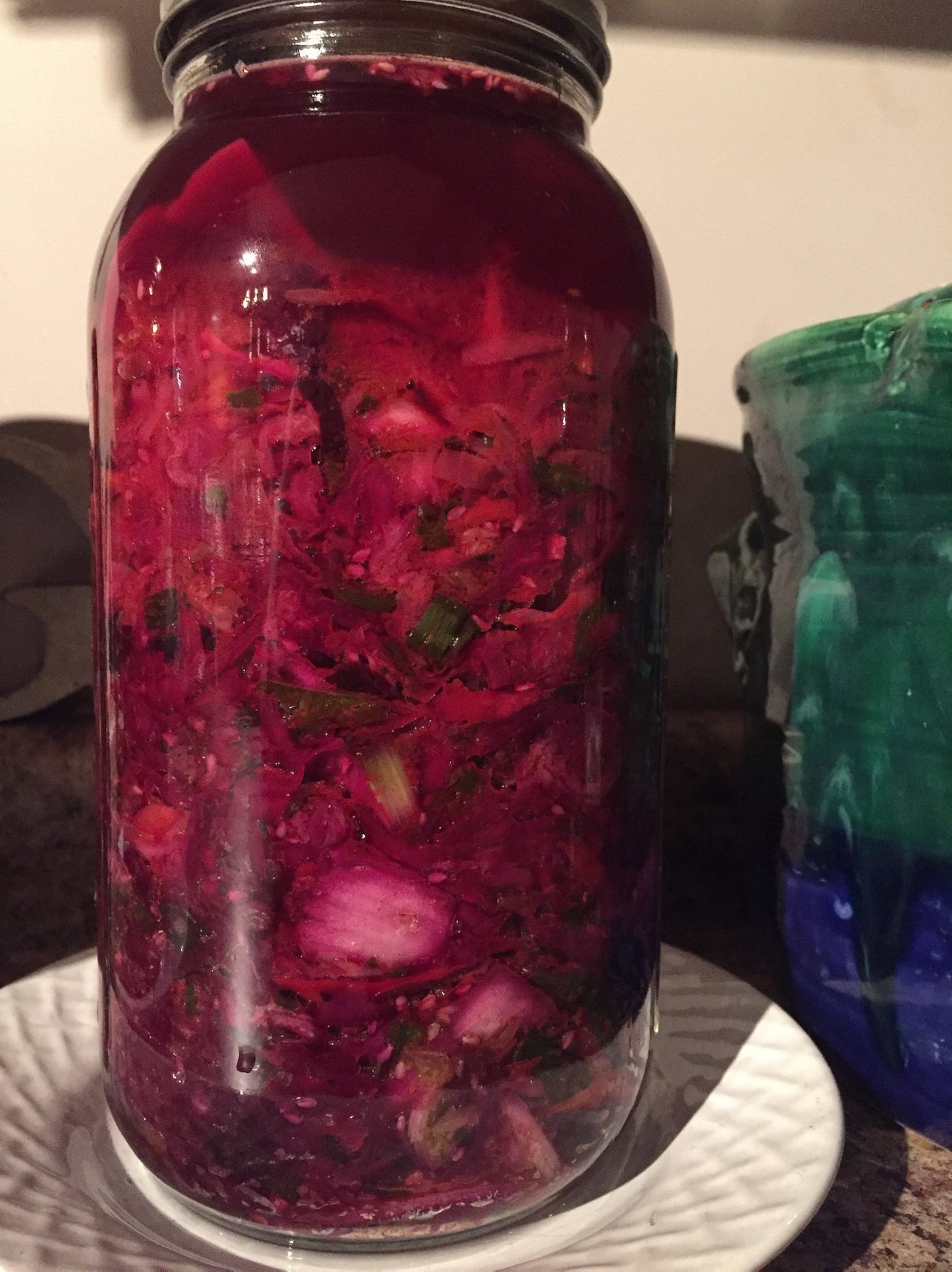

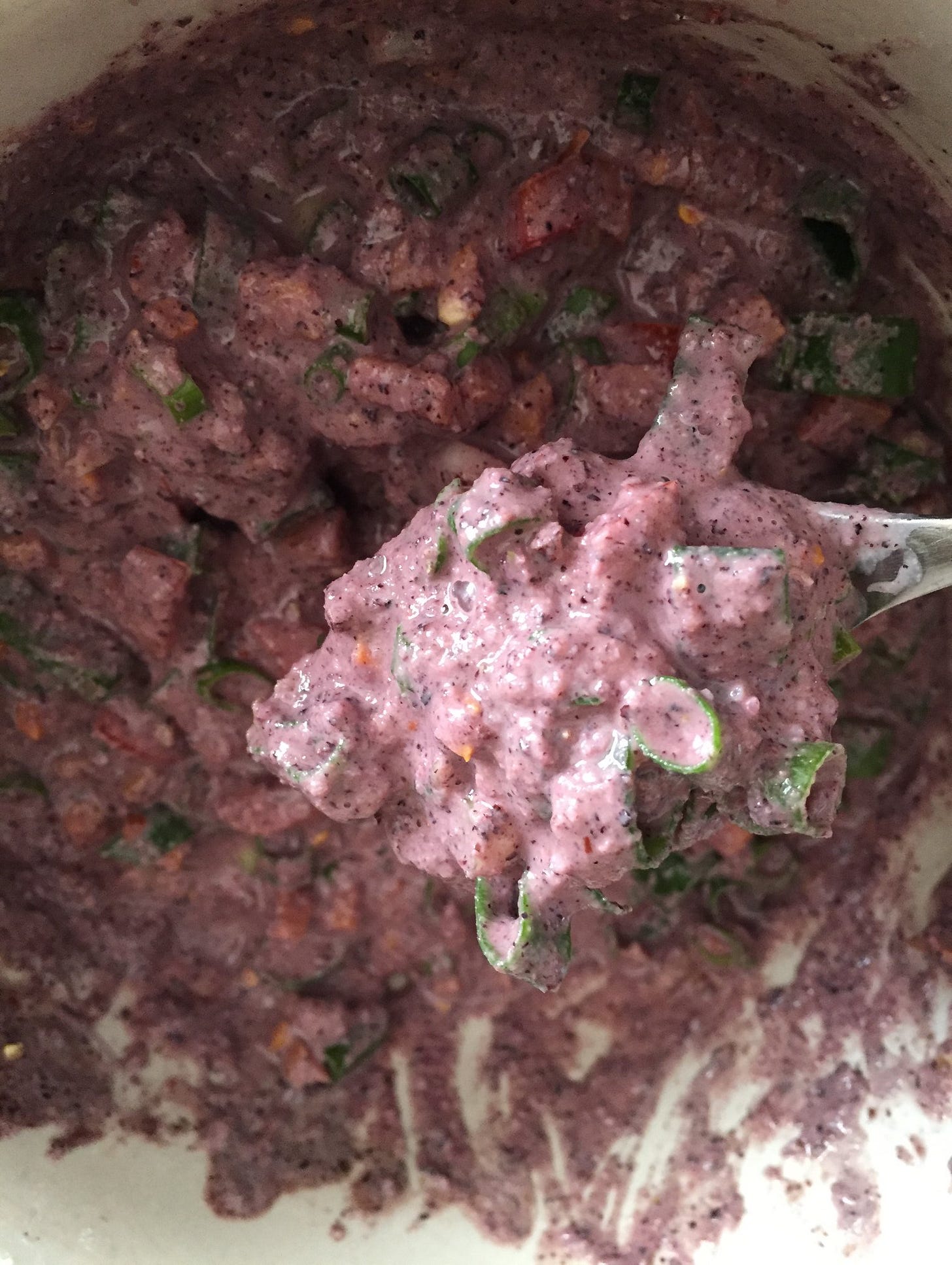

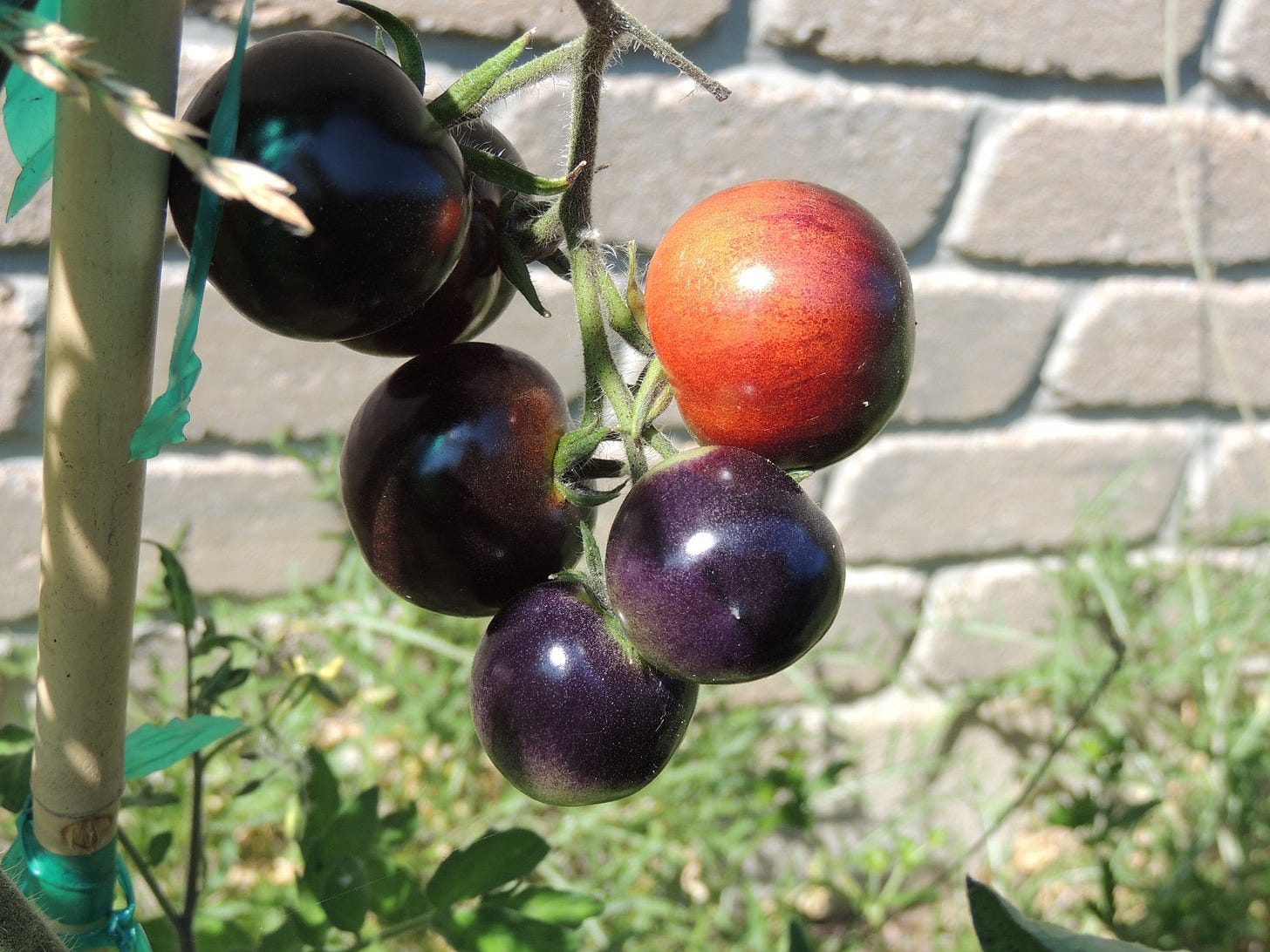

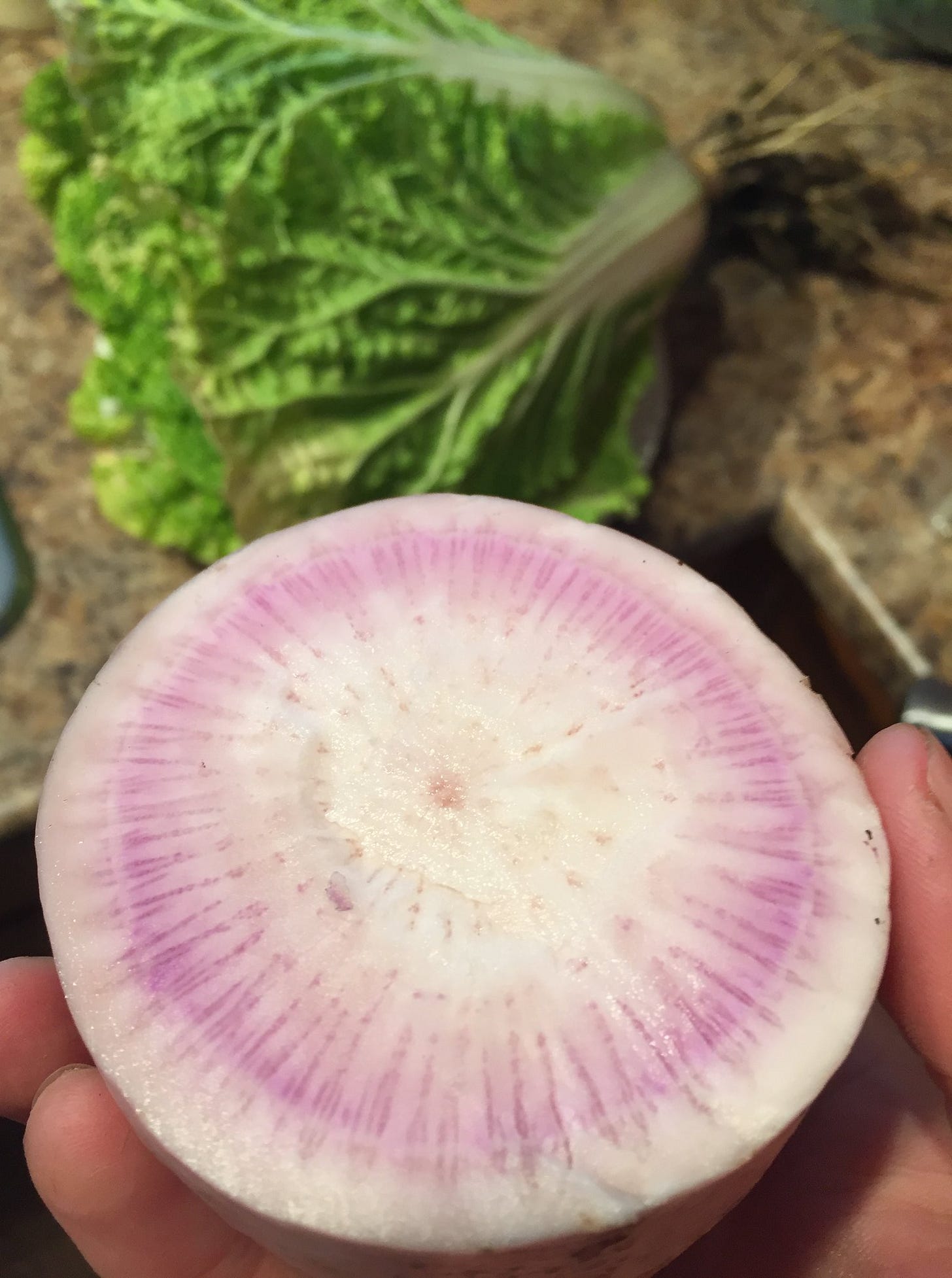



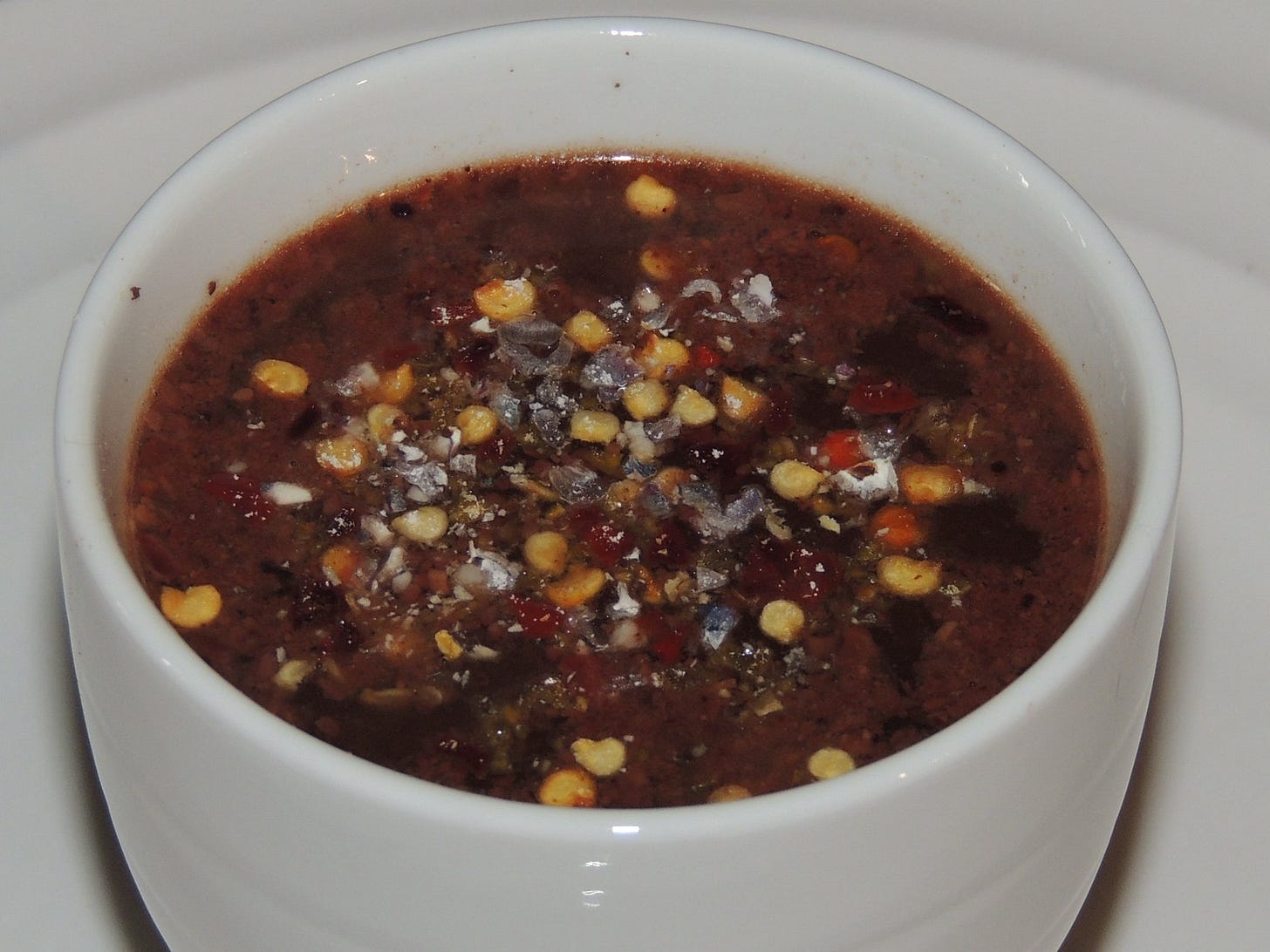
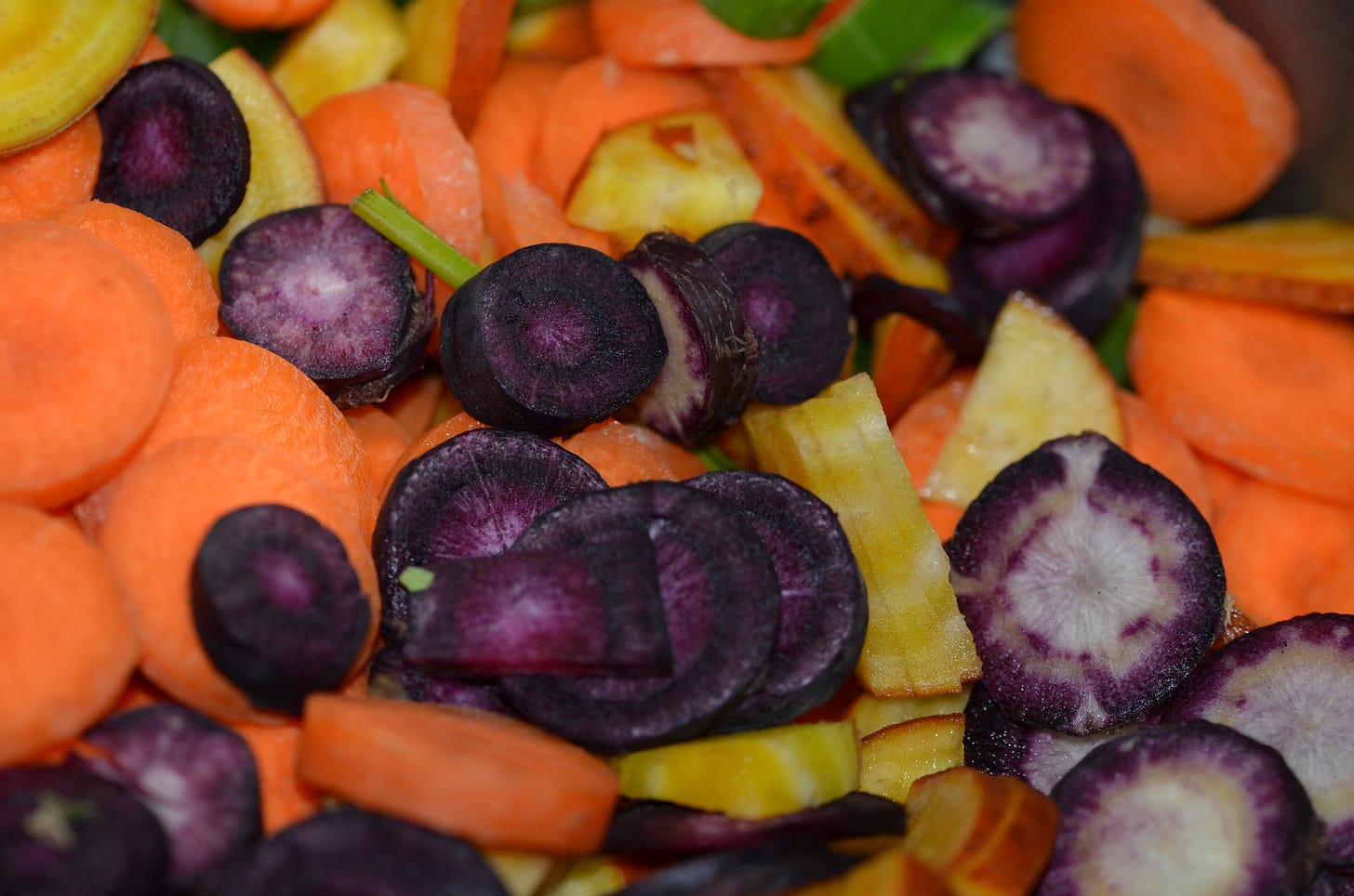
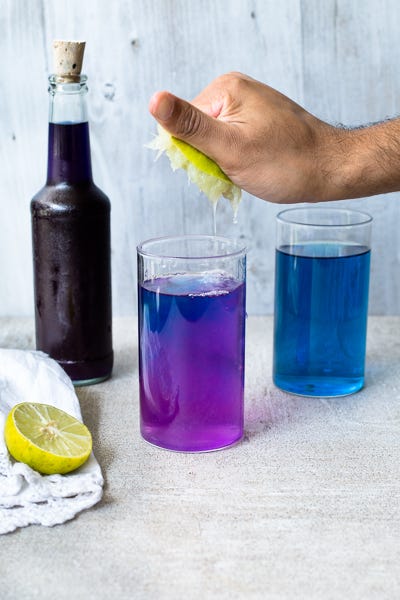
Our garden pics make my mouth water and my heart yearn for summer days. Even though most of what you have written in this article you have previously taught me, there were still several notes that were new. I appreciate your ongoing desire to continuously research and learn more about Mother Earth's garden and share your knowledge with all others. You are my definition of a hero. And i am beyond grateful for you. How blessed i feel to be your wife. I have learned so much from you about foraging, preserving, growing and i know that not only will we always have a delicious food supply, it will be the most healthy too! ❤️
Oooooo, aaaaah.
Black beans are rich in delphinidin but are also high in oxalates. India uses low oxalate delphinidin rich Kala chana/ black chickpeas. A health strategy that is talked about for maintaining beautiful hair is to soak a cup of black chickpeas overnight and then drink the soak water, and just eat the soaked beans raw maybe? That part was mentioned but probably varies. I tried it and the soak water is pretty delicious and brown in color.
Addition: Delphinidin is an anthocyanin that is pH sensitive and it will be more pink or more blue depending on acidity level. (pink-more acidic).
Black beans are rich in delphinidin but also high in oxalates. Black chickpeas are low in oxalate and rich in delphinidin. They are popular in India and have a higher fiber content than chickpeas that we are used to in the US. The brown peel is where the pigments are located and it is higher fiber - chewier than not-brown US chickpeas. Recipe: https://www.indianhealthyrecipes.com/kala-chana/
Regarding pH and delphinidin:
“pH-mediated degradation of delphinidin: in low pH, 1–2 red colored flavylium cations are observed, in alkaline pH 8–10 blue-color quinonoidal bases, in pH 4–6 colorless carbinol pseudobase and chalcone, and in pH > 7, degradation products of delphinidin, 2,4,6-trihydroxybenzaldehyde and gallic acid, are observed (45, ...” https://www.ncbi.nlm.nih.gov/pmc/articles/PMC8969030/